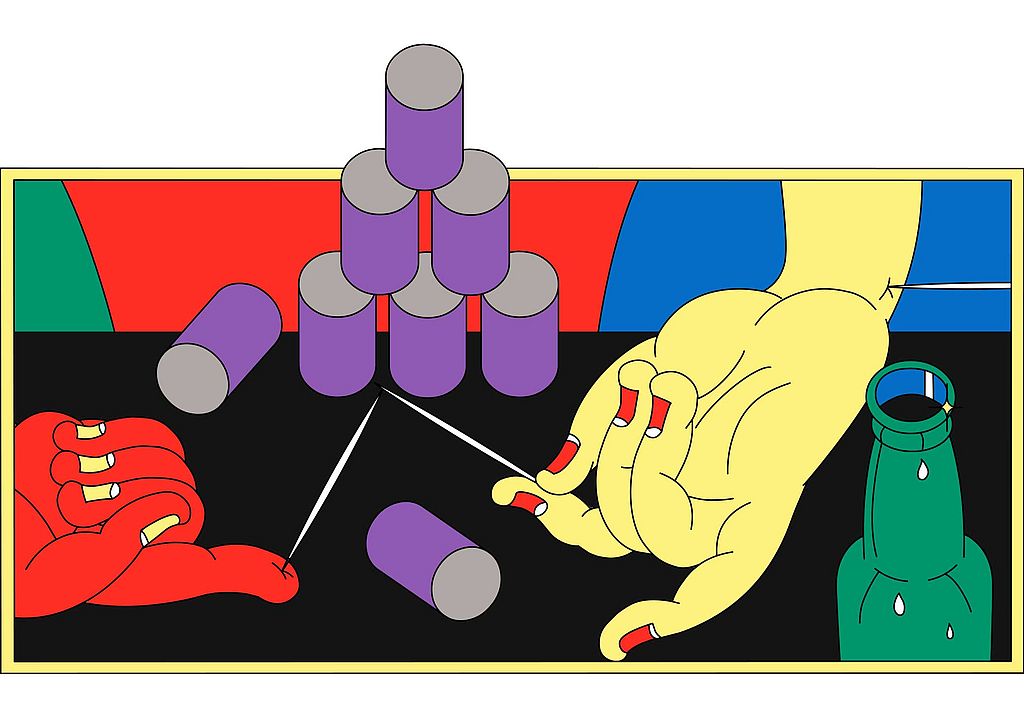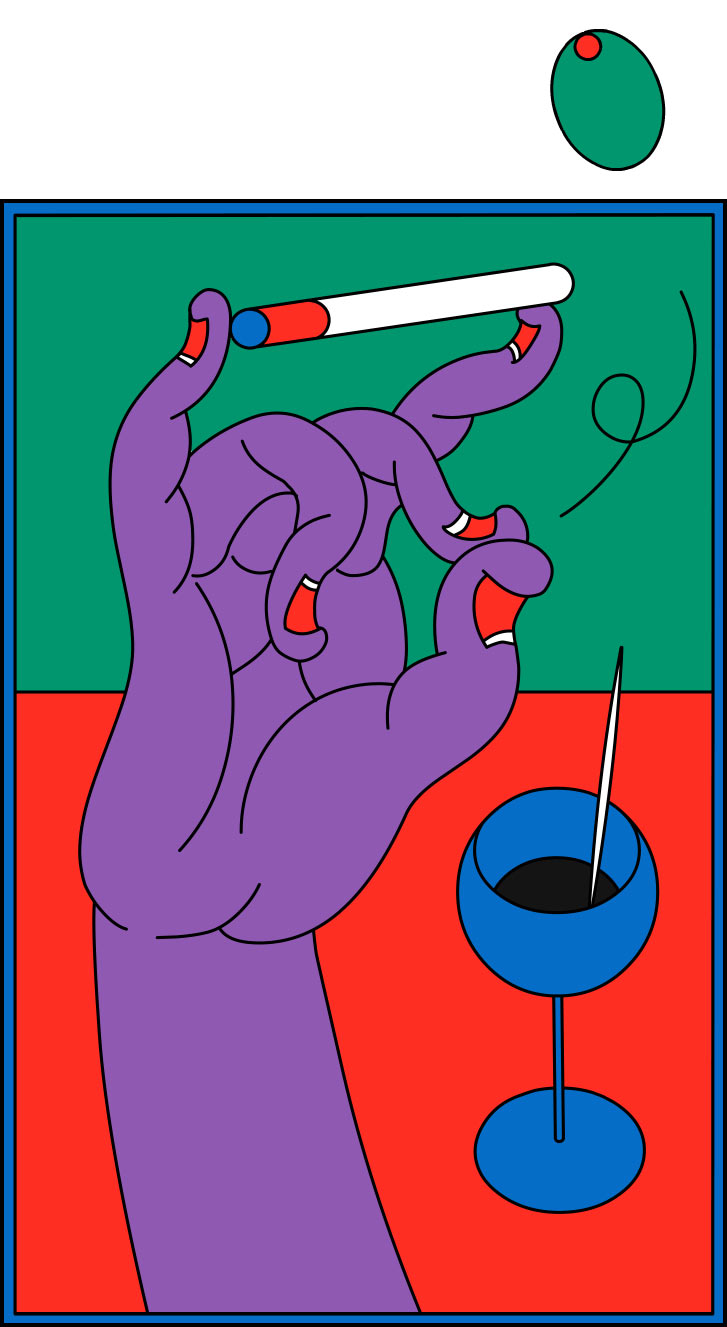Where Is the Surplus? Where Is the Poetry?
Michael Sorkin on the relevance of the architectural convictions of the Bauhaus
The three Bauhaus directors reach out to the present: Michael Sorkin, one of today’s most distinguished architects and architecture journalists, is their guest. They want to know what people think of Bauhausian ideas 100 years after the foundation of their school. Michael is happy to answer their questions.

headline
Michael Sorkin (New York) is a world-renowned architect and author. His practice spans design, research, criticism and education. He is the president of Terreform.
Ludwig Mies van der Rohe: “Modern buildings of our time are so huge that one must group them. Often the space between these buildings is as important as the buildings themselves.”
Continuing to drill down on your pastoralism, Mies, you are now talking about a particular modernist manner of disposing of large objects in a determinative void. But that fantasy of towers in the park (your version or Corb’s) got tire- some long ago. Not simply have other ideas come up (or been retrieved) about composing the architectural ensemble but also about the inhabition of that space in between, which you see mainly as setting. In truth, you were not a particularly great urbanist. Only when the city building was a set piece and an exception to its context – most immortally the sublime Seagram’s – you made jewels. But the generalization became a nightmare.
Walter Gropius: “A modern, harmonic, and lively architecture is the visible sign of authentic democracy.”
For those of us who were formed in the 1960s and think of ourselves as being political, the conundrum of the limits of collective design’s ability to produce good results—and good results that somehow embody a vision of the democracy that aris- es from the process of collaboration – is still very much an open question. Architecture expresses values, always. It can’t help it since it’s the home of human activities, which are never neutral. The difficulty comes when it tries to be too precise – too prescriptive – about the relationship of architectural forms and human behaviours, because it can so easily cross the line into the territory of coercion and oppression.

We will build no cathedrals
Michael Sorkin
Ludwig Mies van der Rohe: “Modern buildings of our time are so huge that one must group them. Often the space between these buildings is as important as the buildings themselves.”
Continuing to drill down on your pastoralism, Mies, you are now talking about a particular modernist manner of disposing of large objects in a determinative void. But that fantasy of towers in the park(your version or Corb’s) got tiresome long ago. Not simply have other ideas come up (or been retrieved) about composing the architectural ensemble but also about the inhabition of that space in between, which you see mainly as set- ting. In truth, you were not a particularly great urbanist. Only when the city building was a set piece and an exception to its context – most immortally the sublime Seagram’s — you made jewels. But the generali- zation became a nightmare.
Hannes Meyer: “We examine the daily routine of each resident, and this pro- vides the functional diagram for father, mother, child, baby and fellow human beings. We explore the relationship of the house and its residents to strangers: postman, passerby, visitor, neighbor, burglar, playmate, craftsman, nurse, messenger.“
Well said, Hannes! That´s a remark I think I could almost date to the day, month, year and minute. It´s also a succinct description of an operationlized architecture that´s practiced even now. Indeed, this diagramming functionalist discourse remains the mother tongue not just of modernity but of archi- tectural accountancy in general. Although the style di ers somewhat with the parametricists, it’s still deadpan and totally creducelous: truthy. The student pins up (or beams) and tries to explain the size of space, the location of uses, and the supportive behaviors as if the relationship could be automat- ed. Your rap is okay as far as it goes (and no architecture should be ignorant of the functional and emotional realities of everyday life) – but, Hannes, where’s the surplus? Where’s the poetry? Where’s the eccentricity? Where’s the di erence? Still, if architects really could be the psychoanalysts of each individual they work for and with, interesting conversations – and outcomes – might emerge.

Hannes Meyer: “The commitment to progressive architecture is a political commitment because its place of birth is the barricade and not the drawing board.”
Right on! This is why we love you, Hannes! You’re telling it like it is. Or was. Or should be! Your pithy statement recognizes that the location of the political doesn’t originate in architectural morphology. That architecture is the setting in which events take place. You’re saying that by privileging the situation, we think of architecture not just as a representational system but as a distributive engine. So, the impatient search for justice in architecture (or anywhere else) starts with a theory of rights, entitlements, and freedom. I think this is probably the most succinct and agreeable quotation I’ve heard from you guys so far, though. Totally down with it.
Walter Gropius: “The fear that individuality will be crushed out by the growing tyranny of standardization is the sort of myth which cannot withstand the briefest examination.”
That’s your religion, Walter! As usual, full of piety and self-impor- tance and empty of nuance. There you sat, living rather lavishly in Lincoln, Massachusetts, deaning at the Power Academy, and still proposing uniform workers’ ats for every pro- letarian on the planet. Intolerable! Borderline hypocrisy! Obviously, there was – and is – a romance of industrial – and technological – prophecies and mass production. The positive side of the love a air was that mass production seemed to o er the prospect of abundance, if harnessed for good ends and the means of production shared. But factory work and a Ford in the garage always also offered a royal road to conformity, alienation, ex- ploitation, loss of identity, and domination by big money. Let’s not forget that Henry Ford was a fucking fascist.
Hannes Meyer: “Building is a technical not an aesthetic process, and the purposeful function of a building always contradicts artistic composition.”
Another high period statement, full of heroic certainty – so old-fashioned (not to mention contradicted in you own work)! To suggest that the artistic be excluded from buildings is to locate the aesthetic in a very traditional 19th-century register. Very! On the other hand, there were people in and around the Bauhaus, especially in your time, who were fully persuaded by the idea that there could be a more general joy in making, in the art of making. The danger of that particular oversimpli cation is that it reduces the worker – who is otherwise to be celebrated – to the status of a robot. These implications must be resisted, although it’s understandable how, in the day, you could – even had to – make such ringing declarations of certitude.
What you think of ISIS?
Michael Sorkin
Ludwig Mies van der Rohe: ”The tendency of our time is wholly oriented toward the secular. The efforts of the mystics will remain episodes. Despite a deepening of our conceptions of life, we will build no cathedrals.”
The cultural apparatus that comes along with functionalism is secularism. But there are two ripostes to your claim. One of those, of course, is to suggest the obvious possibility of secular cathedrals. Flaubert’s “Dictionary Of Received Ideas” goes on about railway stations and, even in the 19th century, it was a platitude to call them cathedrals. On the other hand, I want to ask you, Mies, what you think of ISIS? The scariest thing that’s happening now is a surge of irrationalities and it’s sweeping every country on the planet. Call that secular? And what about more virtual churches? The radio waves generated by a half century of “I Love Lucy” reruns are already light years away from earth. Why limit the site of the spiritual to building? Earth is now surrounded by a sitcom aura light years deep and racing in all directions. There’s a mystic cathedral!
Walter Gropius: “Good architecture should be a projection of life itself, and that implies an intimate knowledge of biological, social, technical, and artistic problems.”
If architecture isn’t about human life, it’s about nothing. But there are so many di er- ent settings in which architecture can be produced. All ideas have a right to life, however brief. I’m certainly not going to object to the strug- gle for a more democratic architecture, which I understand as a question of access to the architectural good, es- pecially in the articulation of Henri Lefebvre of a right to the city, the right to dream the kind of city – or building you want to inhabit. Totally solid about that, although I can’t help but notice an ideological lag time as usual with you. I don’t know whether you ever read Patrick Geddes, who already had a completely biological take on urbanism 50 years before you spoke, Walter. Ideas do take a while to assemble and congeal, there’s some contestation, and then the word gets out.

This is why we love you, Hannes!
Michael Sorkin
Hannes Meyer: “If you could ask the three of us, or tell us something, what you think really went wrong with our movement, the Bauhaus and the School of Architecture, what would you mostly criticize or say it was good to get away from over the past 100 years?”
I have absolutely no desire to criti- cize such an incredible, valuable ex- periment, a truly monumental ri- poste (a contrary cathedral!) to a certain way of doing things. As you may have gathered, I’m particularly fond of you, Hannes, and your ef- forts to infuse architecture with a critical idea of the political. On the other hand, what’s not to like about the Barcelona Pavilion? One of the triumphs of the Bauhaus, despite its short duration, is that it was actually able to embrace a wider range of expression than we mainly associate with it. Just look at you three boyz! We´re looking for a new dean at my school of architecture. I don´t want the job but I know that if I were the dean, I would want to do something very Bauhaus: a really radical questioning of these invented boundaries between the professionals disciplines. They didn´t make that much sense to you Bauhaus people, and I think they make even less sense today. We’re crippled by the parochialism of these discipli- nary definitions, and it’s time to reinfuse the idea of a design practice with a much broader array of sources and meanings. Even to dethrone architecture as mother, to tear down the cathedral inanimacy! With that, thank you, Bauhauslers!
Michael Sorkin, 2018